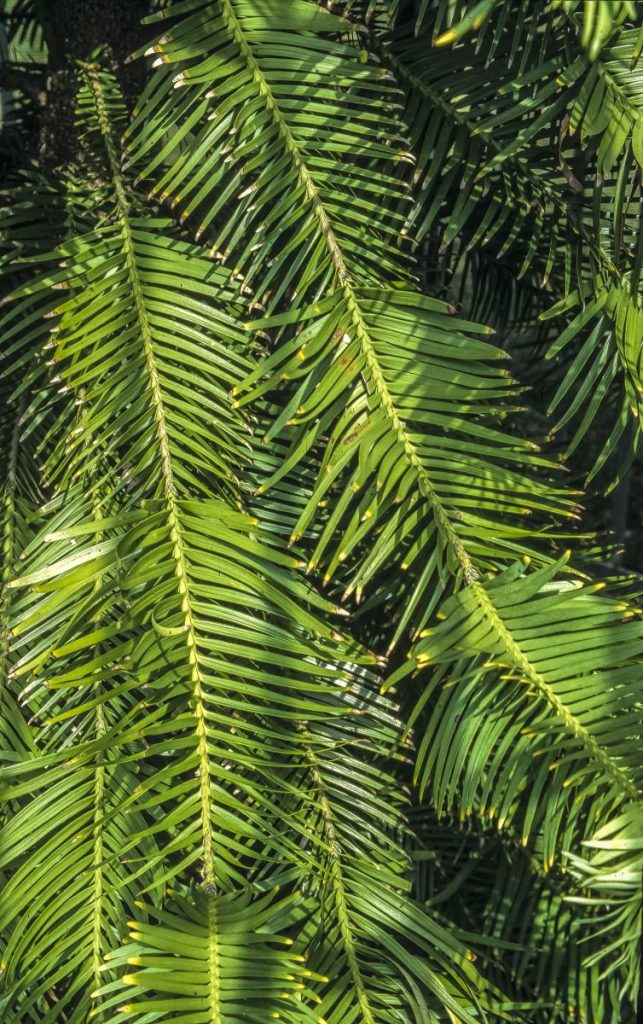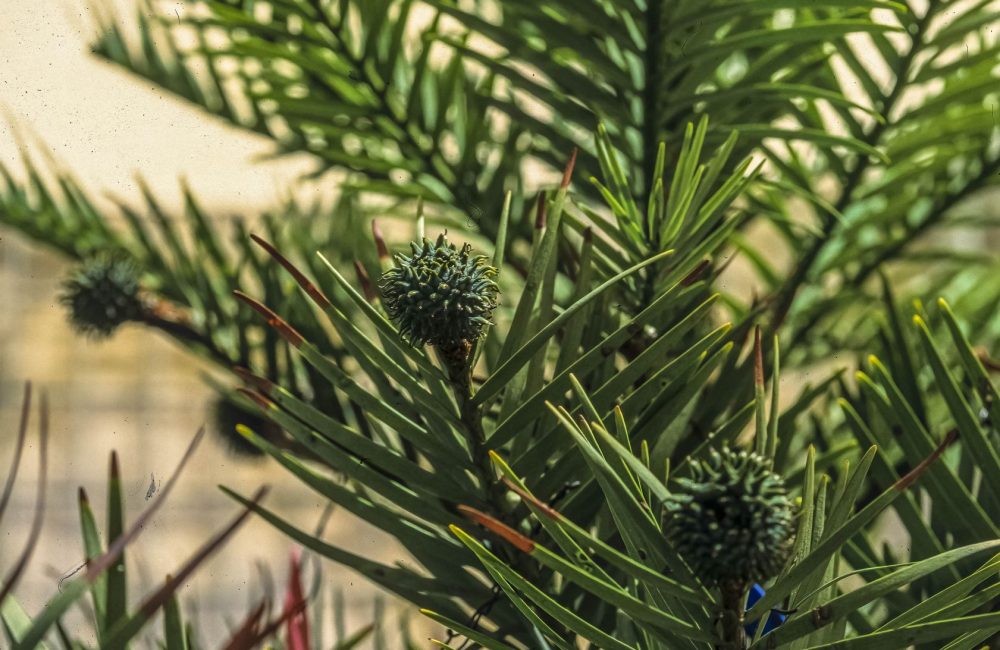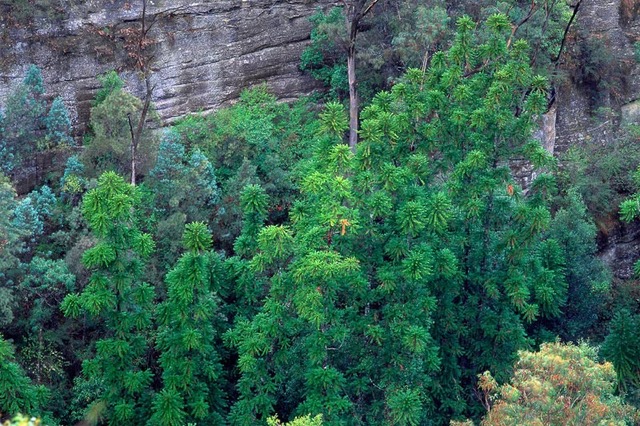The Wollemi pine has been called a living fossil and a global treasure. Botanists think it thrived in wet forests in eastern Australia until about 90 million years ago and thought it then became extinct two million years ago – that is, until it was accidentally discovered in 1994 to be still growing in the Wollemi National Park! About 90 trees, only 50 of which are adult trees, were discovered in a remote, sheltered location in the national park. Needless to say, botanists quickly began to plan how to ensure the species survives well into the future.

One of the ways to help it survive has been to plant more of the trees in other locations (translocation sites), a programme run by the Wollemi Pine Recovery Team. This programme has been particularly important, as the original population is so small. A single, adverse event, such as fire or a disease outbreak, could seriously threaten the survival of the original population. This became very clear in 2019, when the fires that year spared most of the trees in the original grove, but killed almost all of the trees that had been planted at the translocation sites. As a result, in 2021, hundreds more trees were planted at translocation sites. Another major threat is Phytophthora root rot, which the Wollemi pine is particularly susceptible to. Phytophthora is easily spread via infected soil or water and is usually impossible to eradicate. The locations of the original grove and translocation sites have been kept a close secret to try to prevent visitors bringing disease with them and infecting the trees. Authorised visitors – those who need access to study or maintain the trees – take stringent measures to avoid introducing diseases by thoroughly cleaning their gear. Nobody in the National Parks and Wildlife Service knows what a Wollemi pine smells like in the wild because they use so much methylated spirits in this precautionary disinfecting! However, Phytophthora has been found in some of the trees in the original grove and botanists are worried it might eventually kill those trees. This infection is thought to have been introduced by an unauthorised visitor. Because of how susceptible the Wollemi pine is to Phytophthora and how important it is to conserve the species, it’s so important for people not to try to visit the trees in the wild
Botanists still have a lot to learn about propagating the Wollemi pine but knowledge is slowly accumulating. Viability of seed is low (about 10 per cent). Plants grown from seed potentially have greater genetic diversity than those grown from cuttings, but the genetic diversity of the original wild population is low. Most plants are propagated from cuttings, as seed is not easy to obtain, and these vegetatively propagated plants are the ones usually used in translocation plantings. Including seed-grown plants, however, is beneficial to take advantage of any genetic diversity present.


The best alternatives for getting up close to a Wollemi pine are clearly visiting a botanic garden or buying and growing one of your own! There’s very useful information put out by Sydney Botanic Gardens for home gardeners who’d like to grow these fascinating trees. As Cathy Offord, one of the Botanic Gardens botanists says, “Having a Wollemi pine in the garden allows everyone to help conserve this unique, critically endangered species”.
Source article: Here – The Wollemi Pine was long thought extinct. Now experts are trying to regrow the tree in top secret locations.’ Kamin Gock, ABC News 6th February, 2024
